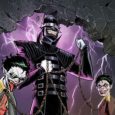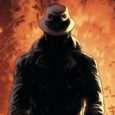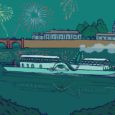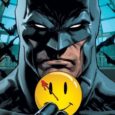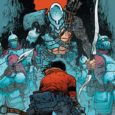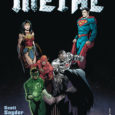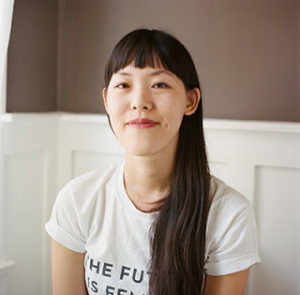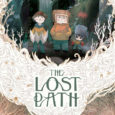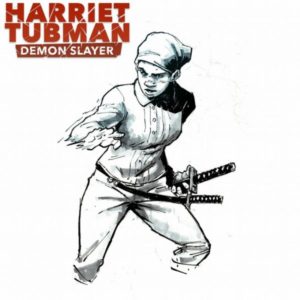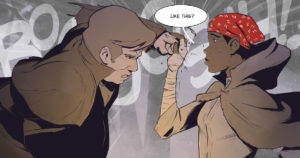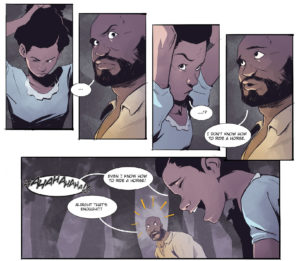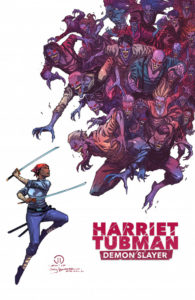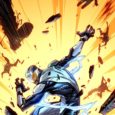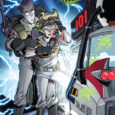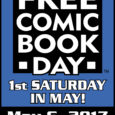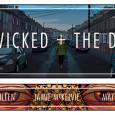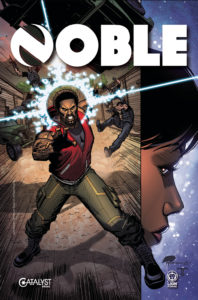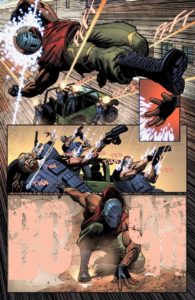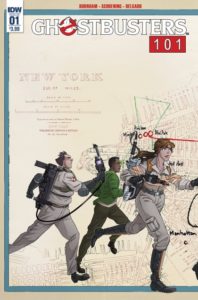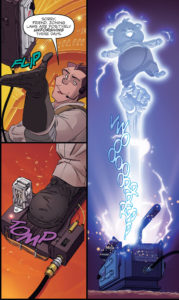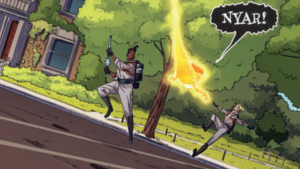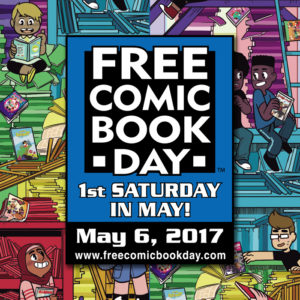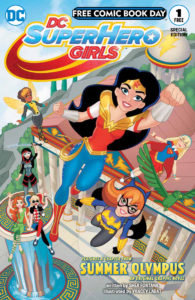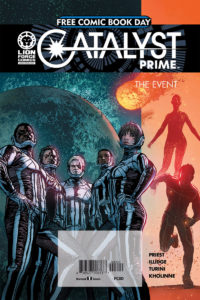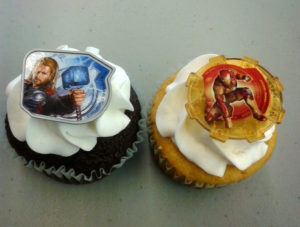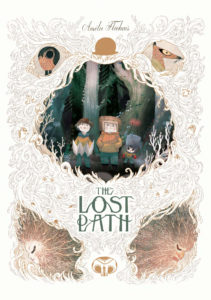 Adventure stories for children starring children will never go out of style. From Alice’s Adventures in Wonderland to The Neverending Story to Goonies, there’s a great thrill in young ones being able to see themselves as the protagonists in exciting situations. The Lost Path by Amélie Fléchais is one such tale in which a trio of boys find themselves in the thick of a secret world of strange and wondrous creatures, but how does it measure up to some of the classics?
Adventure stories for children starring children will never go out of style. From Alice’s Adventures in Wonderland to The Neverending Story to Goonies, there’s a great thrill in young ones being able to see themselves as the protagonists in exciting situations. The Lost Path by Amélie Fléchais is one such tale in which a trio of boys find themselves in the thick of a secret world of strange and wondrous creatures, but how does it measure up to some of the classics?
With some writing help by Jonathan Garnier, The Lost Path is written and illustrated by Fléchais. The book opens with a fairy tale of an older couple whose spirits are trapped by the forest before it quickly transitions to boys playing a scavenger hunt in the forest. They get lost and as the night grows darker, they find their situation growing stranger as they move deeper into the forest.
The story itself feels heavily influenced by Where the Wild Things Are, a notion that is supported by the Maurice Sendak quote that proceeds the book. The boys interact with the creatures, not understanding the world that they’ve arrived in, and with no understanding of the dangers they face. In addition to this, I find a lot of influence from Alice’s Adventures in Wonderland in the way the plot revolves around the forest guardian and the quest for the crown. Both of these are ideal stories to draw inspiration from for a children’s book of these sorts as they are seminal classics, but I don’t think Fléchais really handled the interpretation of the themes properly.
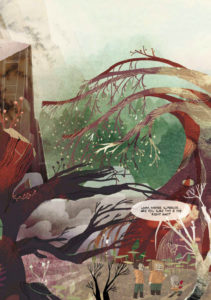 The problem with the story is that the boys don’t do anything. They’re simply reacting to everything that happens around them. They don’t learn any lessons, they don’t affect the world in any way. Their only purpose is to witness the events and they, and by extension the reader, don’t get the chance to see anything through to the conclusion. That’s one of the major shortcomings of the book, in that the story doesn’t really matter. (We don’t even discover the outcome of the scavenger hunt.)
The problem with the story is that the boys don’t do anything. They’re simply reacting to everything that happens around them. They don’t learn any lessons, they don’t affect the world in any way. Their only purpose is to witness the events and they, and by extension the reader, don’t get the chance to see anything through to the conclusion. That’s one of the major shortcomings of the book, in that the story doesn’t really matter. (We don’t even discover the outcome of the scavenger hunt.)
One of the things that turned me off most about The Lost Path was its abrupt ending. While the kids’ journey is an interesting one, the characters they meet are far more intriguing, but Fléchais never dives into any of them. I wanted to learn more about the fox and his supersonic bike, or the moose and how he got the bowler hat, or even what the deal was with the hat. Unfortunately, all of these characters are just incidental, there to give the boys a sense of wonder. Since the story is told from the perspective of the boys, once they are out of the woods, we lose all connection to these strange and wondrous creatures. Their tales are never finished and that’s just a shame.
The book’s art is breathtaking. The illustrations by Fléchais are magnificent and really bring her world and characters to life. Her style suits the creatures she’s created and I love the spin she gives the look of the humans. Each of the boys is unique and easily decipherable at a glance. I also loved the sparse use of color in the book. Most of the pages are black and white, rendered in great detail, but every so often readers are treated to a page of full, vibrant color, which makes the scene more dramatic when juxtaposed against the monochrome panels.
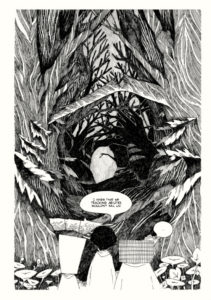 The art also does a great job of slowing down the reader. The Lost Path has a very fast paced story, with so much happening in so few pages that it’s easy to breeze through the whole thing, but the highly detailed art forced me to pause and pour over the details in the minutiae on page, which helped me to digest the story better.
The art also does a great job of slowing down the reader. The Lost Path has a very fast paced story, with so much happening in so few pages that it’s easy to breeze through the whole thing, but the highly detailed art forced me to pause and pour over the details in the minutiae on page, which helped me to digest the story better.
The Lost Path is beautiful visually but doesn’t pack much originality. I would have preferred to spend more time with the Guardian, learning about her kingdom, or some of the animals in the forest. It was slightly disappointing that Fléchais gleaned over all of these interesting situations and themes, instead focusing on the boys finding their way home. I understand her decision, though, as this story felt aimed for children. All in all, it’s a good story for those who are interested in child adventure stories but doesn’t offer much depth.
Grade: B-
Jen Wang is a cartoonist, author and illustrator from Los Angeles and is the creator behind Koko Be Good and co-author of the New York Times Bestselling graphic novel In Real Life with Cory Doctorow. Her latest book, The Prince and the Dressmaker, hit shelves on February 13th, 2018.
The Prince and the Dressmaker revolves around Prince Sebastian as he searches for a bride―or rather, his parents are strong arming him into finding one. However, Sebastian has a secret life: at night he puts on daring dresses and takes Paris by storm as the fabulous Lady Crystallia―the hottest fashion icon in the world capital of fashion!
Sebastian’s secret weapon (and best friend) is the brilliant dressmaker Frances―one of only two people who know the truth: sometimes this boy wears dresses. But Frances dreams of greatness, and being someone’s secret weapon means she has to stay a secret forever. It’s a romantic tale of identity, young love, art, and family.
We met up with Jen after a book signing at Emerald City Comic Con in Seattle.
LC: I wanted to talk a little bit about your protagonist and why you chose to make him exist outside of the heteronormative, cookie cutter, sort of hero. What was your reason for making him fluid?
JW: I think I just felt like…for a while I was looking for a story that would be like a positive Disney movie romantic comedy. Then I wanted to make sure it was a little more contemporary that felt a little queer. I had the idea of a character that would have this clear passion that people could relate to, even if they didn’t have a gender variant identity themselves. If you understand that Sebastian is into fashion and big dresses, that could be something anyone could relate to.
LC: You both wrote and illustrated the book, correct?
JW: Yes!
LC: Was it a conscious decision to make Sebastian unconventionally handsome compared to romcom heartthrobs?
JW: Yeah! I mean, the character is a teenager and I wanted him to look like a teenager. I didn’t want him to be super handsome or too adult looking or too sexy. Not that a teenager can’t be sexy, haha. I wanted to show the version of yourself when you’re still trying to figure out who you are. There’s a lot of recognition in a character who looks like someone you can relate to. I feel like most people seem themselves as conventional looking. The only thing I wanted to make sure to do was to give Sebastian a prominent facial feature . There’s so many costume changes; I didn’t want people to lose the character in a room full of ballgowns.
LC: How did you choose the time period for the book?
JW: The book takes place in the late 19th century and I wanted a time frame that would be sort of old-timey with people in corsets and horse drawn carriages. At the same time, I wanted there to be an emergence of technology. The 19th century had both of those things for me.
LC: Did you pull from any fashion designers as inspiration for your costume designs?
JW: I did research on clothing from the time period. I looked at a lot of historical cosplay costumers online, particularly accessories. There’s a ton of resources for that. The rest I tried to make a bit more modern like something people would wear now.
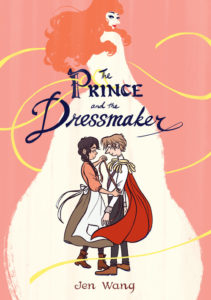 LC: Was it important for you to make the story accessible in every way, versus something that was more queer or adult?
LC: Was it important for you to make the story accessible in every way, versus something that was more queer or adult?
JW: You know, I wanted to make a book that I could read at 13 or 14. It was always the intention, I think. I didn’t really know that much at that age other than what cartoons I liked and what fantasy books I loved.
LC: When you were a teenager, were there any properties that felt accessible to you?
JW: I was really into anime and manga, which I discovered in middle school and high school. I had a friend who was Japanese who had a lot of that stuff. That was before you could find it at the library or in bookstores, haha. It’s actually how I got into comics in general. The thing that was the most influential to me was Revolutionary Girl Utena. I think you can see some overlapping themes in my stuff. It was the first thing I ever read that was queer and unabashedly feminine. I’d never read comics like that before. That was very influential to me.
LC: As someone who also got into comics through manga, I don’t think there was anywhere near the representation you see in that medium as far as the genres of stories you could experience.
JW: There was so much more aimed at teenage girls! I felt completely ignored by American publishers.
LC: I wanted to ask a little about the relationship Sebastian has with his parents. Was that something you drew from real life experiences or just something you wanted Sebastian to go through?
JW: It was something I wanted to have in the book. My parents have always been supportitve of me, but I did ultimately want his parents to accept him despite where they start off. People can change and overlook those prejudices for someone they love.
LC: Is there a comic out that you would like to recommend? Perhaps something recent that might be overlooked?
JW: I really enjoyed Spinning. It reminded so much of how it was like to be a teenager. It felt very real.
—————————————————————————————————
The Prince and the Dressmaker is available wherever graphic novels are sold near you!
For a few years back in the early 2010s horror mash up stories were all the rage. Take an innocuous but well known thing and mix it with a fantasy horror trope and a new hit was made. These were most evident through books like Pride and Prejudice and Zombies and Abraham Lincoln: Vampire Hunter and probably a few others not written by Seth Grahame-Smith. Though that genre has been dormant for a few years, it’s come back quite well with the recent release of Harriet Tubman: Demon Slayer.
Written by David Crownson, Harriet Tubman: Demon Slayer takes place (appropriately) in 1860, deep in the heart of America’s days of Slavery. It opens with a slave family, the Edgefields, as they escape their plantation in search of a life as free folk. When they run afoul of a trio of shady white men, the Edgefields stand their ground only to discover that these men aren’t exactly what they seem to be. Luckily, a mysterious stranger, the eponymous Harriet Tubman, shows up to save them.
One of the things I liked most about the book is the humor. Within the first couple of pages, Crownson makes a joke at the expense of one of his characters and it’s brilliant because it serves a higher purpose than a mere moment of levity. In addition to setting the tone for the book, that initial joke lets the audience know that despite the heady subject matter, they’re allowed to laugh at the story. This is a necessary cue for readers like me, a middle class white man, during the times that the N-word gets bandied around. That word would (rightfully so) make modern audiences uncomfortable but was necessary to tell a story that borrowed heavily from the time of slavery and Harriet Tubman’s real-life struggle. Crownson breaks the ice early to alleviate any possible squeamishness.
The art on the book is superb. Courtland Ellis’ art is smooth, his figures realistic and graceful. There are no overly muscular men rippling through torn shirts. His women aren’t bodaciously disproportioned, and in fact have noticeably different body types. Ellis uses subtle facial expressions on his characters to portray emotions and tip the readers off to what they’re thinking, but he’s then able to go all out during the funny moments. It can be a jarring juxtaposition at times but really ramps up the humor.
The art isn’t perfect, though. Most of the pages are beautiful, however, there’s some panel progression that feels off. Some of the character movement is choppy and stilted, which is detrimental in a book that relies heavily on fight scenes. Thankfully, it’s easy to overlook because there are so many other things to enjoy but hopefully it improves as the series progresses.
Ellis also shines in how he draws backgrounds, notably in the way he uses large brushstrokes to signify foliage. It’s drastically different from mainstream comics and I absolutely love it.
My biggest problem with the book is the dialogue. While most of the characters’ speech is smooth and energetic, the story is sprinkled with one-liners that just seem trite and unnecessary. It tended to be more good than bad, though.
I also wasn’t a fan of the localized dialect. This was probably included to show how different groups speak differently and was effective in establishing the world the story takes place in. I felt like it slowed down the reading experience, forcing me to puzzle out what the characters were saying. I understand that I’m splitting hairs here and maybe sound a little pedantic but this was definitely my take away from the reading experience.
Also, I need to point out the book’s poor punctuation. Normally I don’t even notice the lettering in comic books but the fact that this drew my attention means that it really stood out. Granted, some of the punctuation choices may have been stylistic but there are some instances that are just inconsistent, making the lettering come off as lazy or rushed. Again, I have hope that this will be remedied in future issues.
Despite its flaws, though, one thing that Crownson gets right is the mystery surrounding Harriet Tubman: Demon Slayer. His opening chapter focuses on establishing the characters. He doesn’t dive too far into why the vampires are chasing runaway slaves or even where Harriet comes from. We know nothing of her past, her upbringing, or how she knows how to fight. Crownson reveals just enough to whet my appetite but not too much that I lose interest and don’t return for the second issue.
Having purchased Harriet Tubman: Demon Slayer on a whim during Free Comic Book Day (it was funded through a successful Kickstarter), I have no idea how to get a physical copy of the book. However, you can buy it in digital on Comixology and Peep Game Comix. And I wholly recommend you pick it up. Not only is this book a fun read but it’s also an interesting take on the horror mash-up genre and the life of one of the most prolific American humanitarians.
Grade: B-
As one of the smaller independent presses, Lion Forge Comics is not very well known. Most of their line up consists of comics based on popular 80s franchises (as well as a few not-so-popular). As of recently, though, they are jumping into the super hero game, starting with the release of Catalyst Prime: Noble, a prelude to their upcoming Catalyst Prime universe.
The premise behind Catalyst Prime is that a massive asteroid is heading to Earth and only 5 astronauts are able to stop it. It’s a fairly straight forward premise, one that leaves a lot of room to work with. We’ll learn more about what they’re calling “The Event” on Free Comic Book Day when Lion Forge gives out copies of Catalyst Prime: The Event. From there, the Catalyst Prime universe will slowly unfold in seven monthly comic books. One of these is Catalyst Prime: Noble, which focuses on David Powell, one of the astronauts involved in The Event and what becomes of him in the following year.
The main cast of Noble is only two characters, the aforementioned David and his wife, Astrid. Writer Brandon Thomas was wise to structure the introductory chapter like this as it made it easy to follow. Being new characters, we don’t know much about the kind of people David and Astrid are, so throwing a wide cast at new audiences may become confusing and alienate readers. By paring that down to two, especially two who are so closely tied together, Thomas create a far simpler reading experience while getting the most out of the story.
Most of the issue focuses on David, who has no idea who he is but shows some powerful telekinetic abilities, being pursued by a specialized military team. Everything is left ambiguous; we don’t know why David’s on the run, why these men are chasing him, or who the mysterious “she” is that sent them. It’s a well written, well paced scene that’s enhanced by Roger Robinson’s art.
What I like most about the art is Robinson’s style. He uses a lot of lines, most especially in his figures and when indicating motion. It’s very different from a lot of the more mainstream comics and lends the book a gritty feeling. I use “gritty” as it’s supposed to mean; coarse and dirty, not dark and broody as it’s become to be known. Which I mean as a compliment. The scene involved David being chased by a group of large men through a sandy, desert town. One word that should be used to describe this is “gritty.”
The panel progression is very cinematic. From the very first page we get a slow zoom out from Astrid’s wedding ring as she sits nervously in a waiting room. This transitions to a flashback of not long before, revealing the reason she’s nervous. That lasts less than a page before we return to the present moment, when Astrid is given terrible news and breaks down in tears. Three pages is all it takes to recap her harrowing experience losing her husband in The Event and it’s all that’s needed. Wonderful work by both Thomas and Robinson.
I also loved the end twist. It’s a pretty big reveal that most writers would dangle in front of readers, dropping little clues here and there through subsequent issues in order to keep them on the hook. But Thomas tells us up front at the end of the issue who is masterminding the hunt for David. It’s a great reveal because it opens so many more questions that entice readers to come back without resorting to clichés and cheap tricks.
As a fan of super heroes, it’s nice to break away from the worlds of Marvel and DC, which are steeped in so much history that it’s often difficult to keep up. Catalyst Prime offers a reprieve from that, with strong characters that we get to see evolve and grow in real time. It’s also great to see a comic so deftly blend the techniques of filmmaking into its storytelling. I hadn’t heard much about Catalyst Prime before reading Noble but now I’m definitely looking to go deeper into the universe.
Grade: B
I know this review is a little late considering the issue has been in shops for a couple of weeks now but I really need to talk about Ghostbusters 101. Since IDW announced the title, I’ve eagerly awaited its release. It marks a big step for Ghostbusters as merges the original team with the team from the 2016 reboot movie in comic form.
As the intro to a 6-part limited series, the first issue sets the stage perfectly. There’s not much in the way of action, though the first few pages do pull the reader in quite well. They also serve to introduce new readers to the personalities of the original team of Ghostbusters.
From there we get a glimpse at Walter Peck, the Ghostbusters’s government liaison, and the first seeds of the story arc take root. Basically, the team needs to deviate from their paranormal investigation and elimination and go the route of educators to produce additional revenue. I know it sounds very droll, and for the most part it is. But writer Erik Burnham realizes this and takes the time to poke a little fun at it to help lighten the mood.
Before I get more into Burnham’s writing, let me say that I’m a big fan of Dan Schoening’s art. He takes a lot of inspiration from the actors’ looks from the film but interprets them in his own way. This makes the comic characters feel like separate entities even though the comics relies heavily on the lore of the film. To contrast that, he draws the new team in the spitting image of the actresses, which helps pull the realism of the new movie into the comic. Granted, this is probably due more to likeness rights than character interpretation. I’m sure the producers planned heavily on multiple revenue streams with comics being one part of that.
The art also shines in more than just the characters. Schoening knows how to create movement on the page. His panels are dynamic and exciting, which really goes a long way to telling a great story.
The pencils are enhanced by Luis Antiono Delgado’s vibrant colors. All of the detail and depth he puts into the characters and environments adds life to the book. Also, I love the different effects Delgado uses, such as the glow of the ghosts and the proton streams. They go a long way to making the comic feel cinematic and are beautiful touches.
As the sole writer of Ghostbusters at IDW, Erik Burnham has a strong grasp of the characters. Just like Schoening, he takes influence from the movies but also manages to make them his own. Venkman is still flippant with a dry-wit, Spengler the stoic intellectual. But Burnham takes license and veers the characters into unexpected directions, which is fantastic since it makes the stories less predictable.
But again, just like Schoening, he basically carbon copies the new team into the book. Burnham’s dialogue for Tolan, Holtzmann, Gilbert and Yates is so on point that I could practically hear the actresses’ voices saying the words. This is not a complaint. Since most readers may not be as familiar with the new Ghostbusters, this is a perfect introduction for them into the comic book world. In addition, it’s wonderful to see these great characters brought back to life since we probably won’t be getting a sequel due to less than stellar box office turnout for the film.
After that glowing praise for both the writing and the art, there is a glaring drawback of this issue that needs to be addressed. It is heavily steeped in backstory. Characters make many references to previous events which could easily lose readers who haven’t kept up with the IDW series. Without a doubt, this shows how tightly knit Burnham keeps his narrative, that he can make callbacks to the team’s earlier adventures. But the addition of the new team is bound to draw new readers. Younger readers whose first introduction to the Ghostbusters is the 2016 movie. If they have trouble following the story because of these callbacks, then they may be unlikely to keep up with the series. I’m not saying Burnham should have omitted the references completely, but an old-style Editorial Notes showing previous issues may have been helpful.
I feel that it’s an important step in the IDW series because it brings the new team of Ghostbusters into the comics-verse. Given the vitriol the reboot received, all from the fervor that was created by the casting of four women in the lead roles, having this team of Ghostbusters interact with the “classic” team goes a long way in showing the nay-sayers that a reboot doesn’t negate its predecessor; in this case, it enhances it. Needless to say, I’m looking forward to the rest of this series.
Grade: A-
You may have seen the hashtag #FCBD on your favorite social medium as of late. In case you were confused by the jumble of letters, that stands for “Free Comic Book Day.” The day is quickly approaching, happening on May 6th of this year. If you’ve never heard of the event, we’ve put together a short primer to help you out.
What is it?
Taking place on the first Saturday of every May, Free Comic Book Day is an international event in which comic book stores give away comics to anyone who comes in. It’s not every comic, mind you; there are a wave of comics branded with the FCBD logo which are eligible. But these titles span such an array of genres and ages that you’re bound to find something that appeals to you.
FCBD has been such an outstanding success that 2017 marks its fifteenth year in existence.
Where is it?
Everywhere! OK, well, not really everywhere. Not all comic shops participate in FCBD. Luckily, there’s a comic shop locator on freecomicbookday.com that will point you to your nearest participating store.
What can I expect?
Here’s where it gets fun. First of all, you can expect free comics. However, which comics is up to the shop. There are different tiers of offerings available at different stores so it all depends on how your local comic shop is participating. That Store Locator should help you determine where to go if you want to score a specific issue.
What’s available?
Ah, now you’re asking the right questions.
There’s a ton of good stuff. Fans of Marvel and DC movies won’t be disappointed as both Guardians of the Galaxy and Wonder Woman get the FCBD treatment this year, just in time for their respective films to hit theaters. But Marvel is also offering a chapter from their Secret Empire storyline while DC taps the popular DC Super Hero Girls for a comic.
Archie Comics gets into the mix with two titles of their own. The first is an all-new Betty & Veronica with art by the amazing Adam Hughes. Archie will also be offering a comic based on the popular Riverdale television show from The CW. That one should go over nicely.
A few highlights (or at least titles that I’m most excited for) include:
- TMNT: Dimension X prelude from IDW
- The Legend of Zelda: Twilight Princess/Ocarina of Time from Viz Media
- Doctor Who from Titan Comics
- Buffy: The High School Years from Dark Horse Comics
I’m also excited for Lion Forge Comics, which is using Free Comic Book Day as a stepping stone to launch their newest series, Catalyst Prime: The Event. Written by Christopher Priest with art by Joseph Illidge, the solicit for Catalyst Prime sounds pretty solid and this should be a good series. And with the intro to the series being free, it’s worth checking out,
Of course, that’s not all that will be available. Head over to the FCBD website for the full run down. (http://www.freecomicbookday.com/catalog) (Also, once again, not all of the titles will be available everywhere. You may want t check with your local shop to see if they ordered the one you’re looking for if they participate at that level.)
Anything else?
Yes, so much more!
Because this is such a huge event for local comic stores, many of them go all out to promote it. One of my local shops brings in members from the 501st Legion, a devoted group of Star Wars costumers who make various charity appearances. Every year you can see them roaming the sidewalk outside of the store, greeting pedestrians, interacting and taking pictures with customers waiting on line and just bringing an air of joviality to the occasion.
Yet another of my local comic and gaming store had cupcakes. Yes, homemade cupcakes with little plastic rings featuring Thor and Iron Man. That was a tremendous treat. (Sadly, this store has since gone out of business. I was definitely looking forward to seeing what they did for FCBD this year.)
Many comic book stores also host writer and artist appearances. They’ll invite creators to interact with fans, sign autographs, sell sketches… They basically turn Free Comic Book Day into little comic cons.
Some stores will host free or paid raffles and give customers a chance to win some cool prizes.
A lot of the supplemental fun is up to the individual comic shop and not hosted by FCBD so call your local store to see what, if anything, they may be planning.
I hope many of you are planning on visiting your local comic shop(s) on Free Comic Book Day. If you do just remember, these comics are free to you but the stores still have to pay for them. So when you get your free stuff, make a purchase as well. Like any other business, local comic shops only survive if they turn a profit. If you want to be able to enjoy Free Comic Book Day in the coming years, show them some monetary support.


